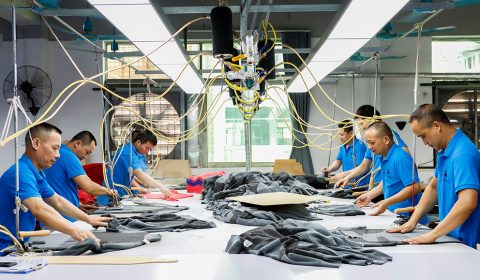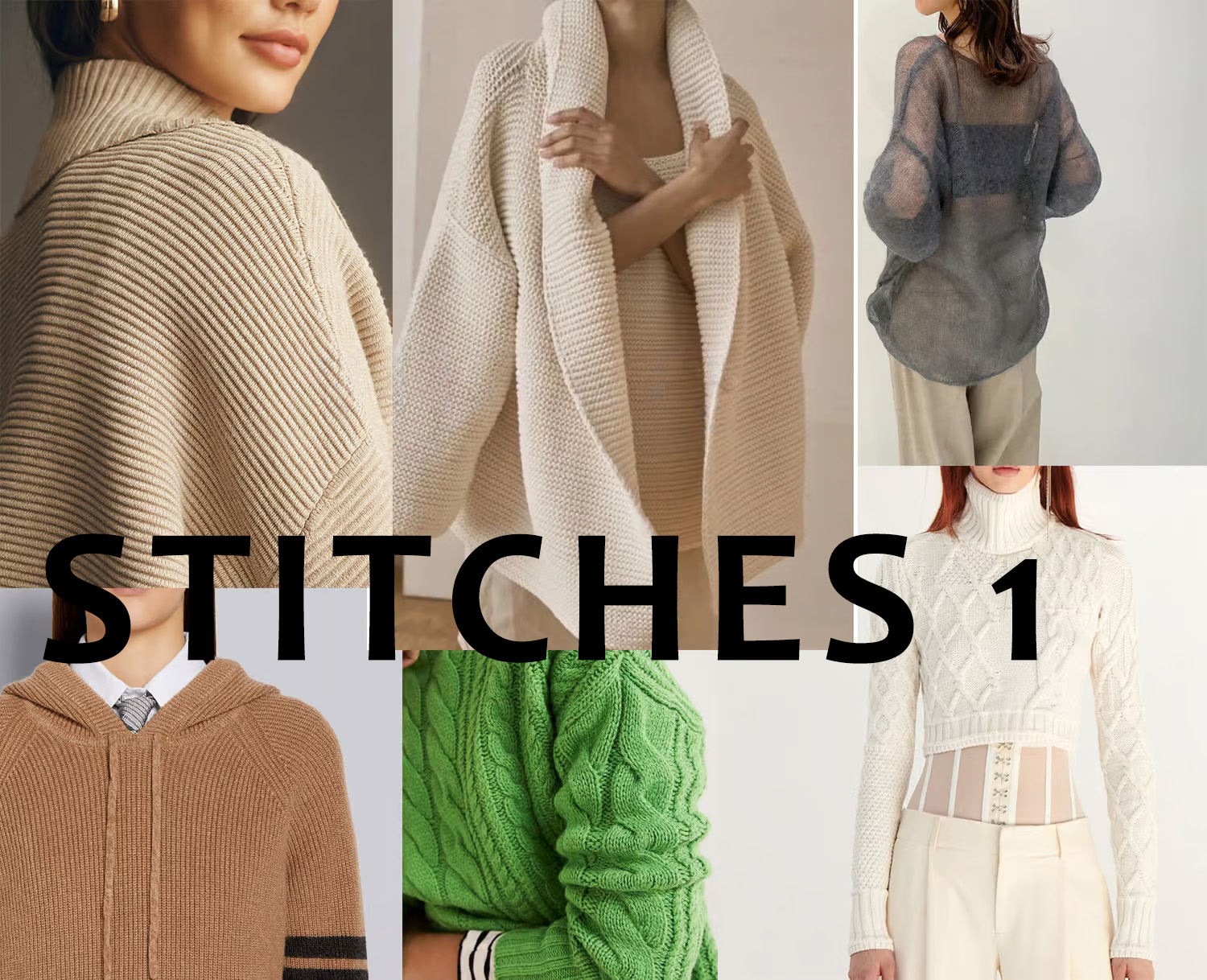The sweater, as a garment that provides warmth and comfort during the cold season, has undergone a colorful evolution. Its evolution reflects not only changes in fashion, but also social and cultural changes. In the early 20th century and 1970s, the evolution of sweaters showed clear characteristics.
The earliest sweaters date back to Egypt in the 7th century BC, when people began using wool fibers to hand-knit basic sweaters. These sweaters are relatively simple in design, usually made of square or rectangular pieces of fabric that are then wrapped around the body. Their main use is to keep warm, especially at night and on cold winter days in desert areas.
Now, mostly incorporated into the fashion world, sweaters come in a variety of styles and uses, from elaborate evening dresses to warm outdoor gear.
Sweaters, as a kind of warm and comfortable clothing, have long been more than a tool for keeping warm, but deeply integrated into movies, music and culture, becoming a symbolically rich fashion element. Its influence in these fields goes far beyond a simple piece of clothing, which represents warmth, affection, nostalgia and fashion.
Sweaters have also found a place in music and culture. In music videos and live music performances, artists often choose to wear sweaters to convey an image of closeness and warmth. In popular culture, sweaters are often seen as a symbol of nostalgia, evoking memories of times past. Especially during the winter holidays, people often choose to wear sweaters and participate in various family gatherings and activities, emphasizing the importance of family and affection. Sweaters are also often the focus of the fashion world, and designers are constantly pushing the envelope, blending sweaters with modern elements to create new styles that are both comfortable and stylish.
Designer’s contribution
The contributions of well-known designers in the fashion industry have had a profound impact on the design and style of sweaters. Through their unique vision, innovative design and deep understanding of fiber materials, these creative masters have not only changed the look of sweaters, but also shaped the entire fashion industry.
First of all, the innovative spirit of the designer pushes the cutting edge of sweater design. They bravely broke with tradition, experimenting with shapes, cuts and knitting techniques to give the sweater a new lease on life.
Second, the designers’ in-depth knowledge of fiber materials has had a profound impact on the quality and feel of sweaters. They know how to choose the most suitable material, whether it is classic cashmere or emerging sustainable fibers, to ensure the comfort and durability of the sweater. This understanding of fibers allows them to exploit the full potential of materials in their designs, creating unique textures, colors and textures.
In addition, the designer’s style influences shape the variety of sweaters. Each designer has their own unique aesthetic, and their designs range from classic British luxury to avant-garde street style. This makes the sweater a versatile fashion item adapted to different occasions and personal styles.
Classic sweater style
The sweater has always been one of the fashion classics, and part of that is because of the variety of classic styles that have always been popular and reinterpreted to represent fashion trends. Here are some classic sweater styles that hold a special place in the fashion world thanks to their unique design and durability.
V-neck sweater: The V-neck sweater is a classic of the classics, and it has always been popular for its simple and elegant design. V-neck can elongate the neck line, add feminine charm, and suitable for all occasions. It can be worn alone or with a shirt or T-shirt, making it versatile.
- Crew-neck sweaters: Crew-neck sweaters are a symbol of comfort and warmth. This style of sweater is usually suitable for the cold season and can be worn with jeans, skirts or pants to create a different style.
- Pullovers: Pullovers are one of the most classic styles and usually have no neckline. They offer a clean and neat look that can be easily worn with a variety of bottoms, from jeans to skirts.
- Cardigan sweaters: Cardigans have a front open design, usually with zippers or buttons. This style is ideal for wearing when the weather changes and can be easily opened or closed to regulate body temperature.
- Striped sweaters: Striped sweaters have always been popular for their classic striped pattern. Whether horizontal or vertical stripes, they have a sense of fashion and can add movement to the outfit.
- Shawl sweaters: Shawl sweaters are usually longer than regular sweaters and can be worn as lightweight outerwear. They provide extra warmth and a sense of style, suitable for both fall and spring wear.
- Sequin sweater: Sequin sweater is a classic style for special occasions, and the shiny details make it a top choice for parties and celebrations.
These classic sweater styles represent a variety of different fashion options, whether casual, formal, comfortable or stylish, there are suitable options. Not only have they remained popular over the decades, but they have evolved and reinterpreted over time, breathing new life into the fashion world. No matter which style you prefer, the classic sweater style will always be an integral part of your fashion wardrobe.




 English
English Deutsch
Deutsch Français
Français Italiano
Italiano Español
Español Русский
Русский Polski
Polski Nederlands
Nederlands Svenska
Svenska

